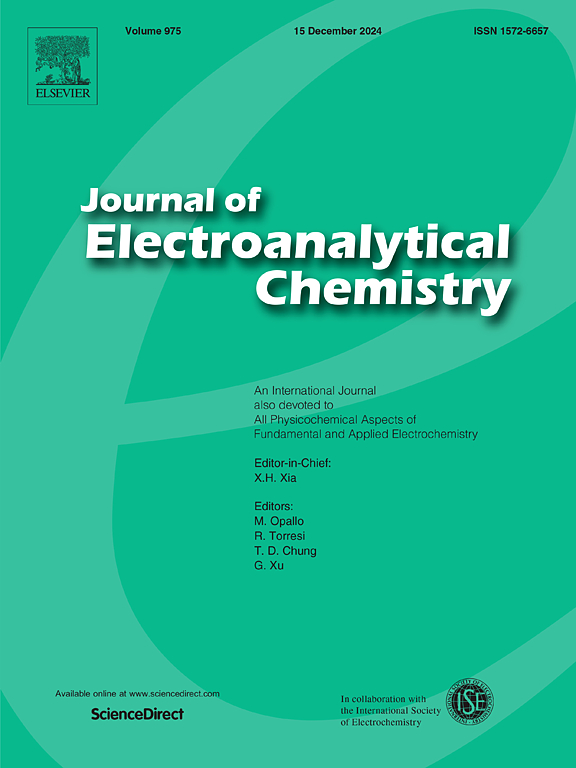Electrochemical sensor based on laser-induced graphene and CeO2 for sensitive and selective dopamine detection
IF 4.1
3区 化学
Q1 CHEMISTRY, ANALYTICAL
引用次数: 0
Abstract
In this study, we developed a highly sensitive electrochemical sensor for detecting dopamine (DA) using a simple and fast CO2 laser scribing technique. The UV/Ozone-treated polyimide (PI) film coated with CeO2 precursor was scribed by the CO2 laser to synthesize the electrochemical sensor (UV-LC). The CeO2 particles were well anchored on the laser-induced graphene (LIG) surface, enhancing the electrochemical surface area (ESA) from 1.31 cm2 in LIG to 3.35 cm2 in UV-LC. Also, the CeO2 particles were affected by the reducing charge transfer resistance (Rct) from 1281 Ω to 761.8 Ω which is the LIG and UV-LC value, respectively. UV-LC demonstrated a linear response to DA concentrations from 0 to 10 μM, with a sensitivity of 25.09 μA/μM·cm2 and a detection limit (LOD) of 0.38 μM which is the higher and lower value compared to other metal oxide-based DA sensors. Additionally, UV-LC exhibited good selectivity with glucose (GU), ascorbic acid (AA), and uric acid (UA) being less than 55 % of the DA current response. These results suggest this sensor is highly suitable for DA detection in biosensing applications. Furthermore, this simple and rapid fabrication process opens possibilities for various electrochemical devices.
求助全文
约1分钟内获得全文
求助全文
来源期刊
CiteScore
7.80
自引率
6.70%
发文量
912
审稿时长
2.4 months
期刊介绍:
The Journal of Electroanalytical Chemistry is the foremost international journal devoted to the interdisciplinary subject of electrochemistry in all its aspects, theoretical as well as applied.
Electrochemistry is a wide ranging area that is in a state of continuous evolution. Rather than compiling a long list of topics covered by the Journal, the editors would like to draw particular attention to the key issues of novelty, topicality and quality. Papers should present new and interesting electrochemical science in a way that is accessible to the reader. The presentation and discussion should be at a level that is consistent with the international status of the Journal. Reports describing the application of well-established techniques to problems that are essentially technical will not be accepted. Similarly, papers that report observations but fail to provide adequate interpretation will be rejected by the Editors. Papers dealing with technical electrochemistry should be submitted to other specialist journals unless the authors can show that their work provides substantially new insights into electrochemical processes.

 求助内容:
求助内容: 应助结果提醒方式:
应助结果提醒方式:


